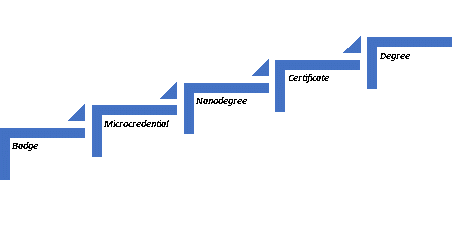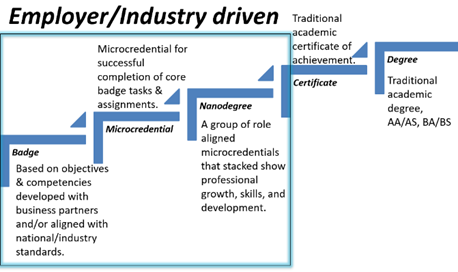8/27/18 Update: Check out a video version of this post on my YouTube channel “Learning: Your Strategic tool for Success!” or go direct here.
How does your organization hire new people? Post a job description online, have recruiters sift and search, interview until they find someone? How is that working out? And how long do those new hires stay? There is a faster, more focused way to fill your talent pipeline and it begins with Human Resources, Learning & Development, and the Operations teams working together strategically and it does not rely on educational institutions working on their schedule to produce graduates ready to work and recruiters trying to meet the demand.
Start from the inside with people who already understand the organizational culture, who have an emotional investment, and who want to stay and grow. It is easier to hire entry level employees and provide them a path forward so invest and develop current workers to fill these hard to hire roles. It begins with a strategic discussion with the Operations team to identify their workforce needs in the near term and to forecast forward 24 – 48 months ahead. The focus of the discussions center on the skills and competencies needed to support current business goals that have been difficult to hire and to look forward and identify the new products, services, and business goals that will need staff to support and develop in the future. It is important to stay focused on the

role needs, the technical skills and the business competencies the role requires so the person will be successful.
With this knowledge Learning & Development can work backwards and develop a learning ladder that will map content to the defined skills and competencies. Begin with reviewing existing content, then identify new topics that are needed and determine if it can be created internally, acquired from a 3rd party provider, or develop a partnership with an educational institution. Determine what level of skills are needed to be successful in the role and create a credentialing model that meets the need of the role in ways that allow employees to clearly obtain the desired skills and provides Human Resources a method to identify internal candidates that have prepared for the new opportunities. I must stress how important it is to not complicate this, if the new roles require an extension of skills (such as adding new programming languages to an existing programmer) then using credentials such as badges and other microcredentials are effective tools to monitor and use to fill the talent needed.
An advantage to aligning need defined and targeted training with these types of credentials is that they are employer driven. You can customize the depth and breadth for your organization and include your business specific attributes ranging from culture

needs to operational processes. Your ability to control when, where, and how people take your training allows you a high degree of flexibility to monitor your talent pipeline and prepare for future needs and growth as you need. This model allows you to utilize the resources educational institutions provide as you see fit for in this model you focus on what your talent development needs are specifically and do not need to invest the time and resources on courses outside of the business need that institutions often require people to take to receive their credentials. This model provides you the flexibility to choose what works best to meet the business goals in a timely and effective manner.
There is one final step to making this model fully functional and Human Resources should lead the business partnership in strategic planning. For employee’s to be skilled and prepared for the future opportunities, especially for new roles that will be supporting new products and services, they need to know the skill and career path available. Developing a career pathway that is clearly aligned to a learning ladder allows people to know roles and opportunities they can work towards and the skills and competencies they need to qualify for the role along with the ways they can acquire them.
As you consider taking control of your talent pipeline just remember to follow my 5C’s.
- Consider and calculate future needs – what will the organization need in terms of talent to be successful?
- Create a HiPo (high potential) community at all levels – from new hire to leadership roles identify who the high potential employees are and develop career paths for all roles. Focus on people and their potential to grow and contribute for that will lead to organizational growth and profit.
- Communicate openly and often – this is vital to this model’s success to ensure open roles and people who have acquired the desired skills and competencies are connected clearly. Nothing will create disengagement and distrust more than having someone who is prepared for a new role find out the role is posted externally, and they were not considered or informed. This takes extra effort on Human Resources however it is faster to recruit internally with people who have proven credentials than to search externally and have to filter and find a candidate to fill the role and fit in the culture.
- Finally, chart the learning needed clearly and align it to the defined career path’s skills and competencies to ensure that people who follow the learning ladder will meet the organization’s business needs and be successful.
With the costs of turnover combined with the challenges of finding and keeping new hires while being ready to provide new products and services to grow the organization the time is now to take control of your talent pipeline. Choose the skills needed for today and plan for future resources by determining the credential level needed and implementing a learning ladder that aligns to your talent plan. If you are interested in learning more about developing this in your organization let me know and we can discuss.
Discussion
No comments yet.